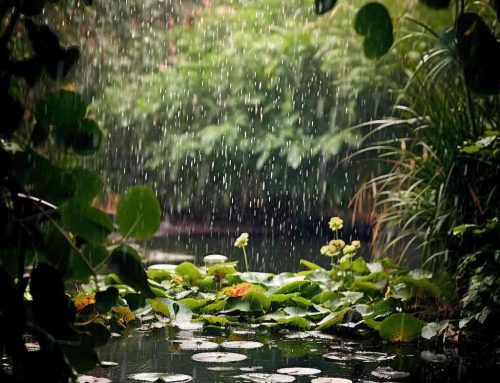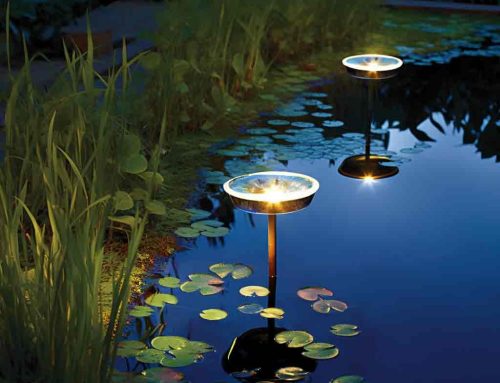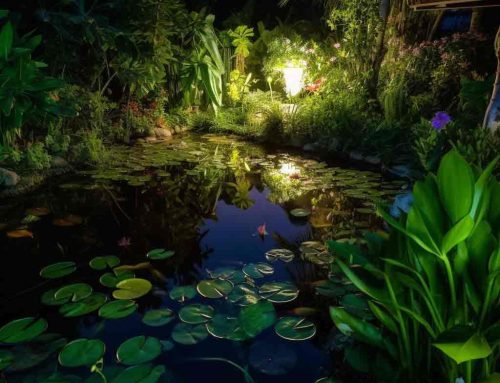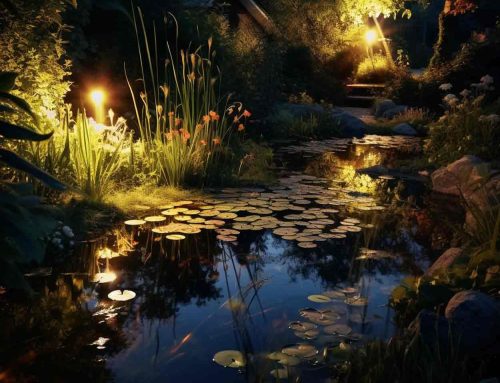 A well stocked bog garden makes a natural partner for any pond, enabling a far greater variety of plants to be grown around the water than narrow marginal shelves could ever allow.
A well stocked bog garden makes a natural partner for any pond, enabling a far greater variety of plants to be grown around the water than narrow marginal shelves could ever allow.
Though in some ways it is an extension of the watery environment onto the land, making a successful bog garden demands an understanding of how pond and bog differ – and not just in terms of the amount of water in each! While ensuring the pond stays healthy and algae-free involves keeping nutrients out of the water, bog plants thrive surrounded by all the nutrients and organic matter they can get – so managing the two side-by-side requires a little bit of careful planning. Fortunately it is not too hard to get things right and the benefits are well worth it.
First, Build Your Bog
The main key to success is to keep the two zones separate. Plan to have the bog garden itself a little lower than the pond and a short distance – around 15cm or so – away, to ensure that there will be no run-off to wash nutrients and bog soil into the water. This also allows the bog garden to act as a natural soak-away if heavy rain should ever fill the pond.
Having decided where to locate the bog garden, the rest of the work is very similar to building the pond in the first place. Having marked out an appropriate shape with a rope or hose, the hole needs to be excavated to a depth of 30– 40cm and then lined – though for this job, plastic sheeting will do very well since the bog is not supposed to be perfectly water-tight. To make sure the soil will remain damp, but not water-logged, puncture the liner in several places to allow gradual drainage to take place and then add three or four centimetres of coarse sand on top, leaving the hole ready to be filled in with a nutrient-rich mix.
There are many different recipes for producing artificial bog soil – the important thing being to ensure that it is very humus-rich – and while all bog-gardeners have their own favourite mix, two parts peat moss, one part compost and one part garden soil is a good starting point.
Other materials which are sometimes used include well-rotted manure, mushroom compost and leaf litter – so there is room for a little experimentation. Topping this off with a good layer of sphagnum moss or forest bark will help to keep the bog suitably damp.
Planting It
The newly constructed bog provides unique planting opportunities and with a little bit of imagination, well selected bog plants can be used to create the illusion of a seamless transition from pond to garden – especially in time when foliage covers the narrow strip left between the two. In addition, the bog’s moist conditions are perfect for damp-loving wildlife – especially amphibians – the foliage offering ideal places for them to hide.
Although for bog plants the flowering season is often quite short-lived, they more than make up for it with the spectacular leaves which come in a wide variety of shapes, sizes and colours, adding a new dimension to the water feature. Also, because their roots are in soil – albeit damp – they tend to warm up sooner than their marginal cousins, often providing their splash of colour a little earlier in the year and extending the time that the pond area puts on a show.
At first sight, the term “bog garden” may seem a little off-putting – conjuring up images of some muddy swamp, alive with mosquitoes – but the reality could hardly be more different.
It has sometimes been said that no garden is too small for a pond; by the same token, perhaps no pond should be without its bog garden – an ideal spot to grow those slightly unusual plants which like their feet nicely soggy, but have no desire to be drowned.
Last Modified: May 24, 2022








